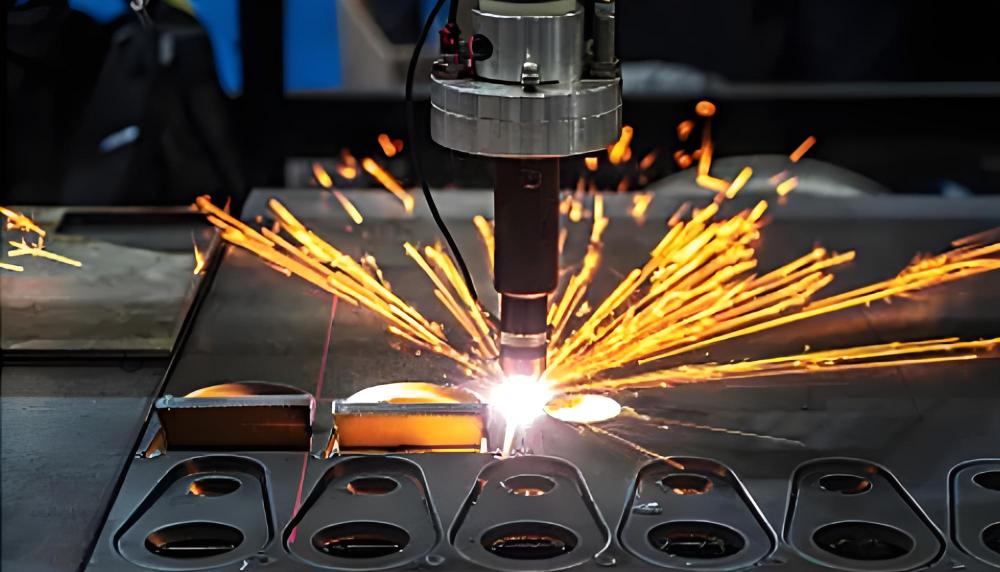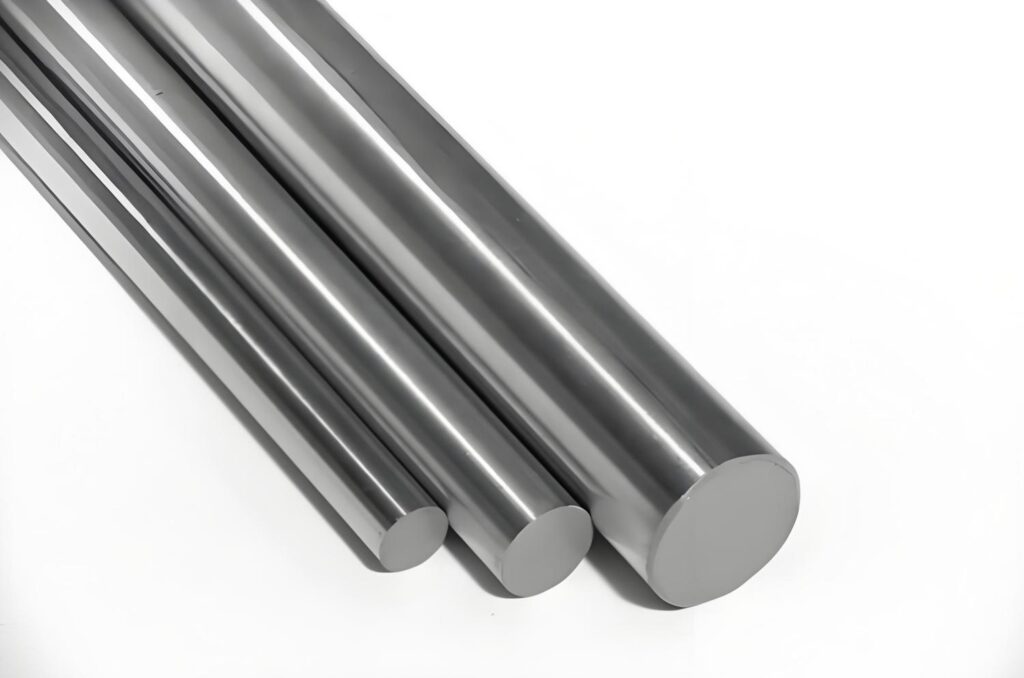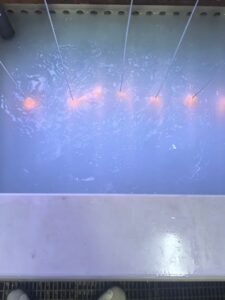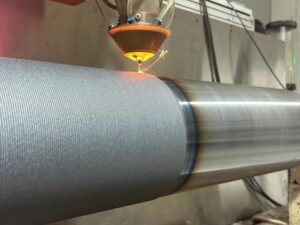1045 Steel
1045 steel is a cornerstone in the world of machining and manufacturing, prized for its balance of strength, versatility, and affordability. As a medium-carbon steel, it offers a unique combination of properties that make it a go-to material for industries ranging from automotive to heavy machinery. This blog dives deep into the world of material 1045 steel, exploring its composition, properties, processing methods, applications, and more, providing a comprehensive guide for professionals and enthusiasts alike.
What Is 1045 Steel?
1045 steel, often referred to as AISI 1045 steel, is a medium-carbon steel widely used in the machining industry. Known for its excellent strength and durability, this steel grade belongs to the AISI/SAE classification system, which identifies it by its four-digit number. The “10” indicates a carbon steel with no significant alloying elements, while “45” denotes its approximate carbon content of 0.45%. This composition places 1045 carbon steel in the medium-carbon category, offering a balance between hardness and machinability.
This steel is available in various forms, such as hot-rolled, cold-rolled, and forged, with 1045 cold rolled steel being particularly popular for applications requiring a smoother surface finish. Its widespread use stems from its ability to be machined, heat-treated, and formed into a variety of components, making it a staple in manufacturing.
1045 Steel Composition
- Carbon (C): 0.42%–0.50% (the 1045 steel carbon content is key to its strength and hardness)
- Manganese (Mn): 0.60%–0.90% (enhances toughness and wear resistance)
- Phosphorus (P): ≤0.040% (kept low to avoid brittleness)
- Sulfur (S): ≤0.050% (minimizes to improve machinability)
- Iron (Fe): Balance
This composition gives its characteristic strength and versatility. The carbon content provides a good balance between hardness and ductility, while manganese improves its wear resistance and toughness. The low levels of phosphorus and sulfur ensure that the steel remains machinable and free from excessive brittleness, making it suitable for a wide range of applications.
1045 Steel Properties
Mechanical Properties
- Tensile Strength: Typically ranges from 570–700 MPa, depending on heat treatment. This makes it strong enough for demanding applications like gears and shafts.
- Yield Strength: Around 300–450 MPa, providing good resistance to deformation under stress.
- Elongation: Approximately 16–20%, indicating decent ductility for forming processes.
- Hardness: In its normalized state, the alloy has a Brinell hardness of about 180–200 HB. After heat treatment, such as quenching and tempering, hardness can increase significantly, reaching up to 50 HRC.
- Fatigue Resistance: Moderate, suitable for components subject to cyclic loading when properly treated.
These properties allow AISI 1045 steel to perform well in applications requiring a balance of strength and flexibility, such as in the production of machine parts and tools.
Physical Properties
- Density: Approximately 7.85 g/cm³, typical for carbon steels.
- Thermal Conductivity: Around 50 W/m·K, allowing for efficient heat dissipation in machined components.
- Melting Point: Approximately 1,510°C, ensuring stability under high-temperature processing.
- Magnetic Properties: It is ferromagnetic, making it suitable for applications involving magnetic fields.
These physical characteristics ensure that 1045 cold rolled steel and its other forms maintain structural integrity during machining and in service, contributing to its widespread use.
How to Process 1045 Steel
Machining and processing 1045 steel requires careful consideration of its properties to achieve optimal results. The material’s medium carbon content makes it relatively easy to machine, but specific techniques can enhance its performance.
Machining Techniques

It is often machined in its normalized or annealed state to improve workability. Common machining processes include:
- Turning: Used to create cylindrical components like shafts. Proper cutting speeds and feeds are essential to avoid excessive tool wear.
- Milling: Suitable for creating complex shapes and surfaces. It is often preferred for milling due to its smoother surface.
- Drilling: Effective for creating holes, though care must be taken to manage heat buildup.
- Grinding: Used for achieving high-precision finishes, especially in applications requiring tight tolerances.
Heat Treatment
- Normalizing: Heating to 850–900°C and air cooling to refine grain structure and improve uniformity.
- Annealing: Slow cooling after heating to reduce internal stresses and improve machinability.
- Quenching and Tempering: Quenching in water or oil after heating to 820–860°C increases hardness, followed by tempering at 400–600°C to balance toughness and strength.
Welding
Welding 1045 steel can be challenging due to its carbon content, which increases the risk of cracking. Preheating to 200–300°C and using low-hydrogen electrodes can mitigate these issues. Post-weld heat treatment may also be necessary to reduce residual stresses.
Surface Treatments
- Case Hardening: Increases surface hardness while maintaining a tough core.
- Plating or Coating: Improves corrosion resistance for components exposed to harsh environments.
These processing methods make this steel highly adaptable, allowing manufacturers to tailor its properties to specific needs.
1045 Steel Applications
- Automotive Components: Crankshafts, axles, and gears benefit from the steel’s strength and fatigue resistance.
- Machinery Parts: It is used in the production of shafts, spindles, and couplings due to its machinability and durability.
- Tools and Dies: The material’s ability to be heat-treated makes it ideal for forging dies and cutting tools.
- Construction Equipment: Pins, bolts, and hydraulic rams made from 1045 steel withstand heavy loads and wear.
- Agricultural Equipment: Components like plowshares and mower blades leverage the steel’s toughness and affordability.
The use of this steel is particularly prevalent in applications requiring precision and a smooth surface finish, such as in the production of high-quality machine parts.
The Advantages and Disadvantages of 1045 Steel
Advantages
- Cost-Effective: It is relatively inexpensive compared to alloy steels, making it a budget-friendly option for many applications.
- Versatility: Its balance of strength, ductility, and machinability allows it to be used in diverse industries.
- Heat Treatment Response: The material responds well to heat treatment, enabling customization of its mechanical properties.
- Availability: It is widely available in various forms, including hot-rolled and cold-rolled, ensuring easy sourcing.
Disadvantages
- Corrosion Resistance: Without surface treatments, the steel is prone to rust, limiting its use in corrosive environments.
- Weldability: Medium carbon content makes welding more difficult, requiring careful preparation to avoid defects.
- Limited Alloying: As a plain carbon steel, it lacks the enhanced properties of alloy steels, such as greater strength or corrosion resistance.
By understanding these pros and cons, manufacturers can make informed decisions about when and how to use this alloy.
Why Choose 1045 Steel for Machining?
The unique combination of properties in 1045 steel makes it an excellent choice for machining projects. Its medium carbon content provides a sweet spot between hardness and workability, allowing for efficient production of high-quality components. Whether used in automotive, construction, or industrial applications, AISI 1045 steel delivers reliable performance at a reasonable cost.
For industries looking to balance performance and budget, 1045 steel offers a practical solution. Its ability to be machined, heat-treated, and formed into complex shapes ensures that it remains a staple in manufacturing.
Precionn: Your Partner in 1045 Steel Machining
When it comes to leveraging the benefits of 1045 steel, Precionn stands out as a trusted name in the machining industry. With years of expertise in precision machining, Precionn specializes in transforming materials like 1045 carbon steel into high-quality components for a variety of applications. Their state-of-the-art facilities and skilled team ensure that every project meets the highest standards of quality and precision.
Precionn’s commitment to excellence extends to their ability to process 1045 steel with advanced machining techniques, heat treatments, and surface finishing. Whether you need custom shafts, gears, or other components, Precionn delivers tailored solutions that meet your specifications.




